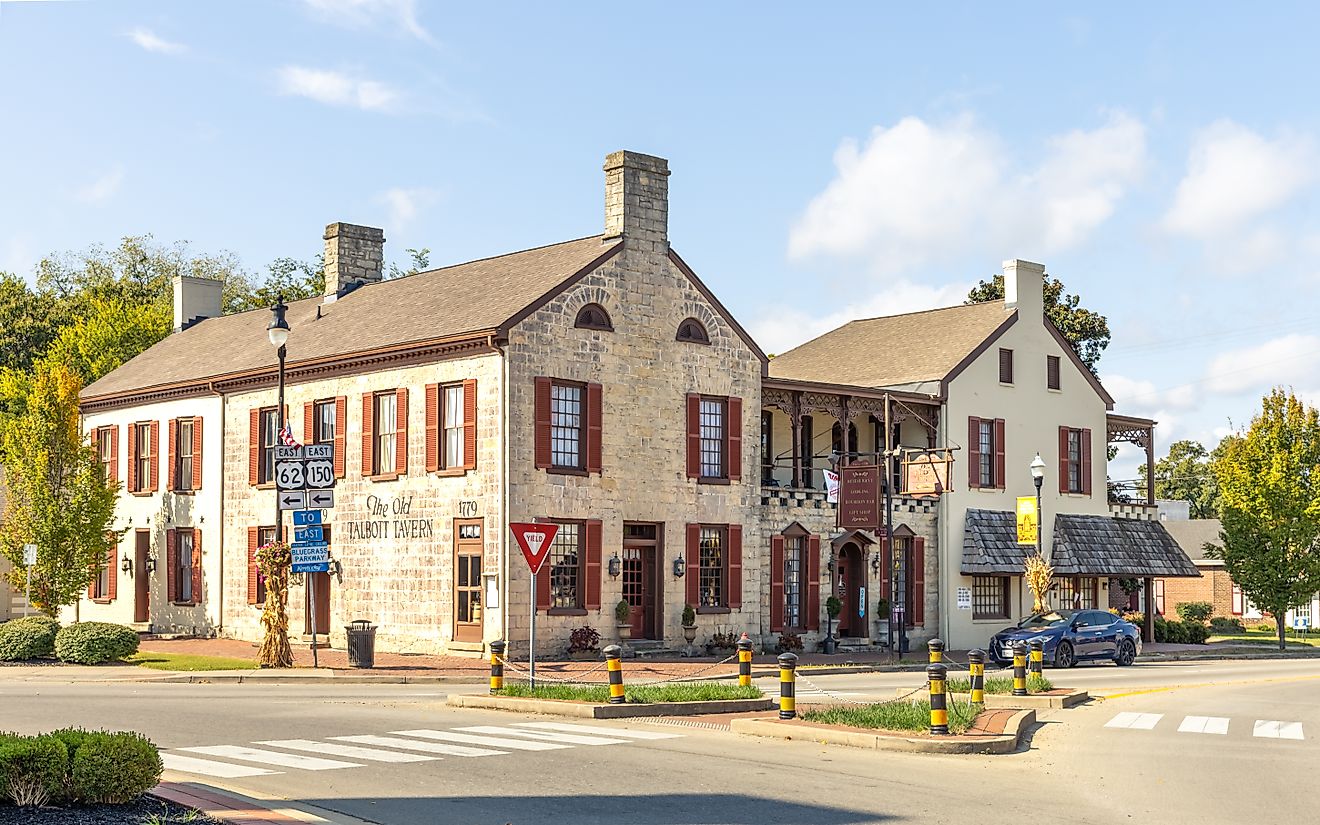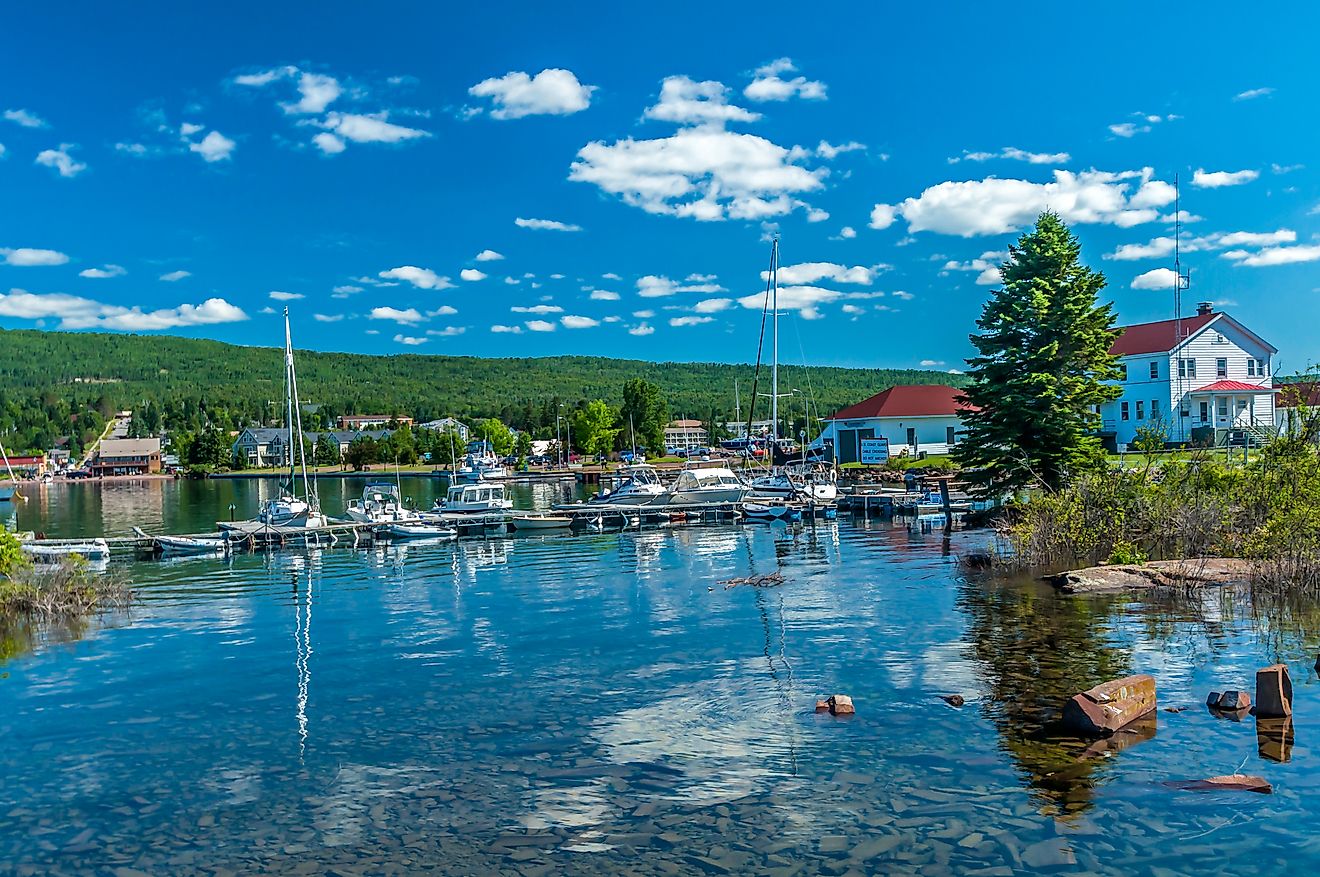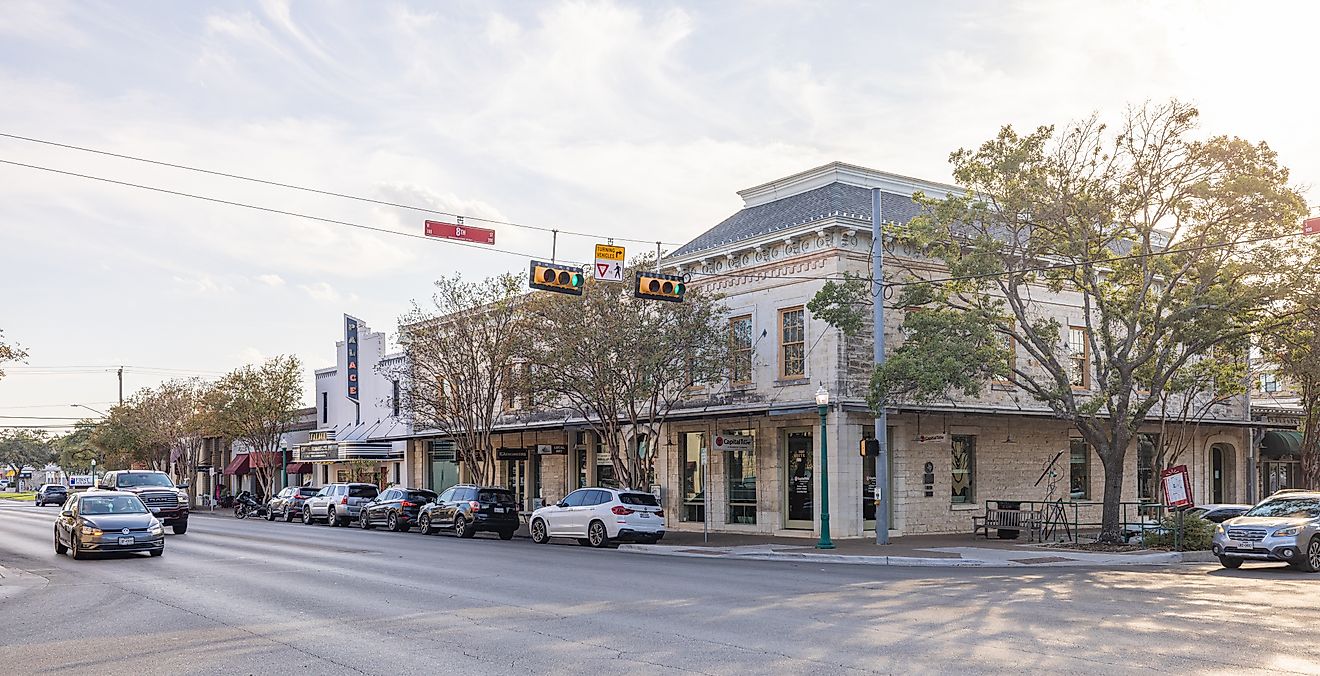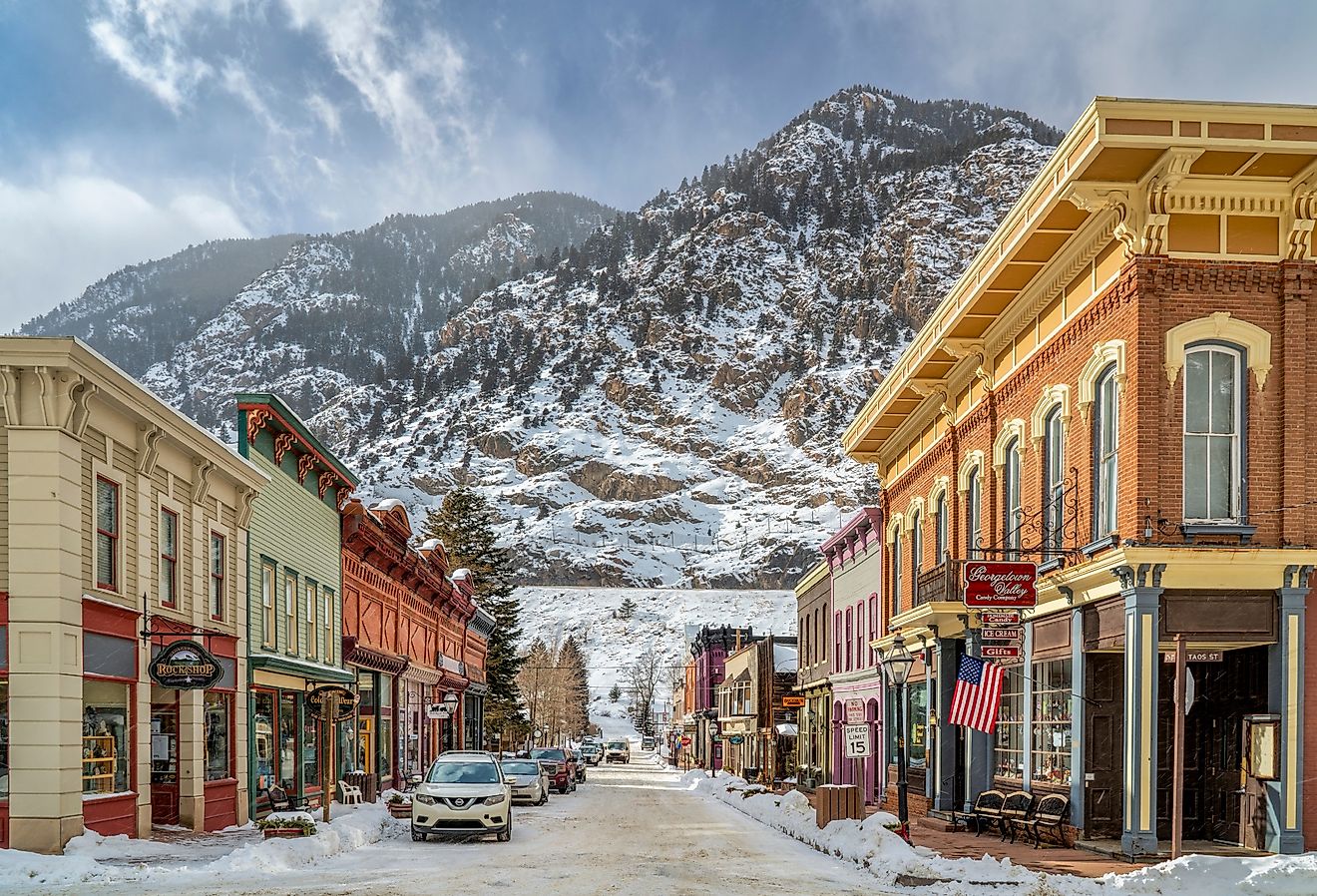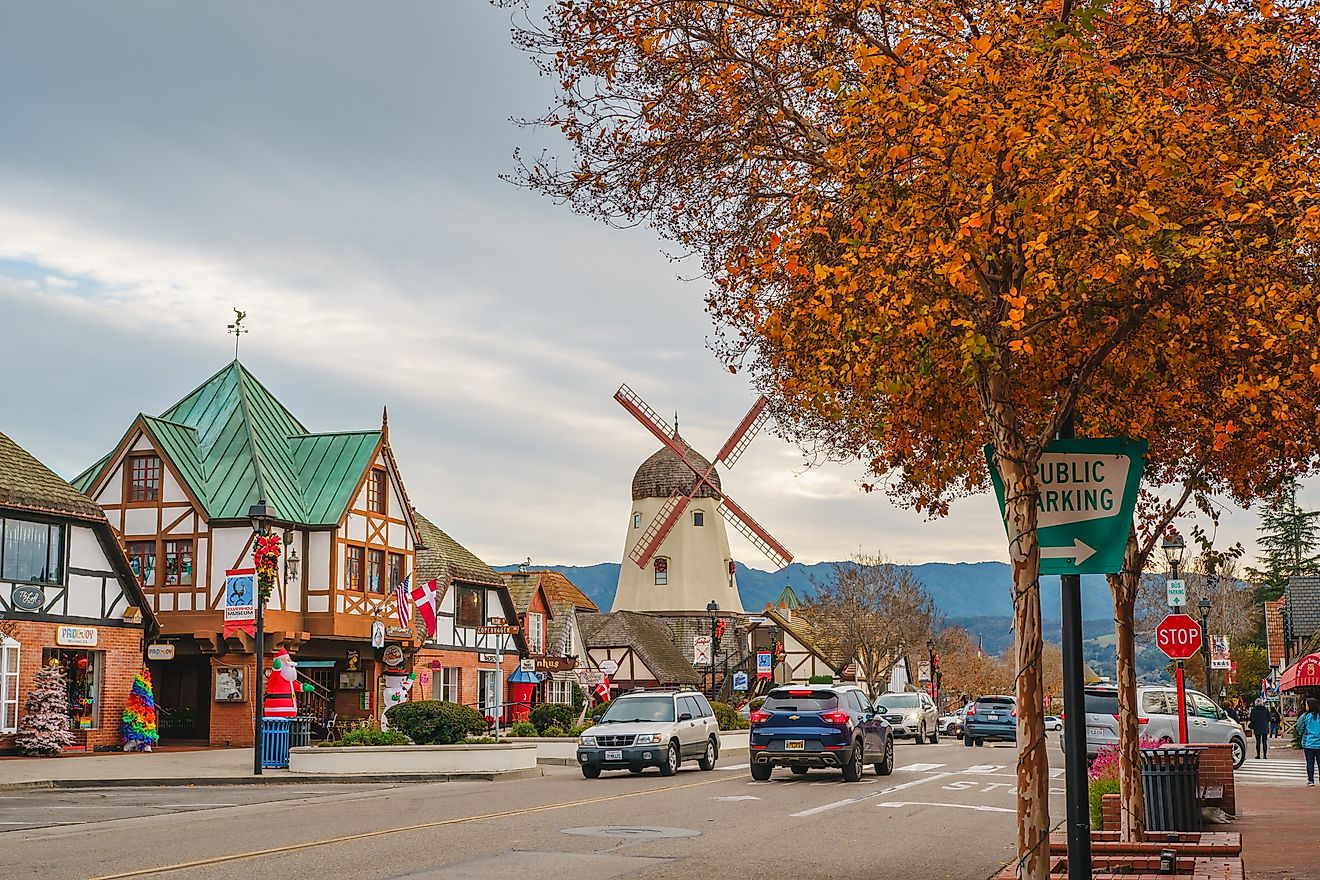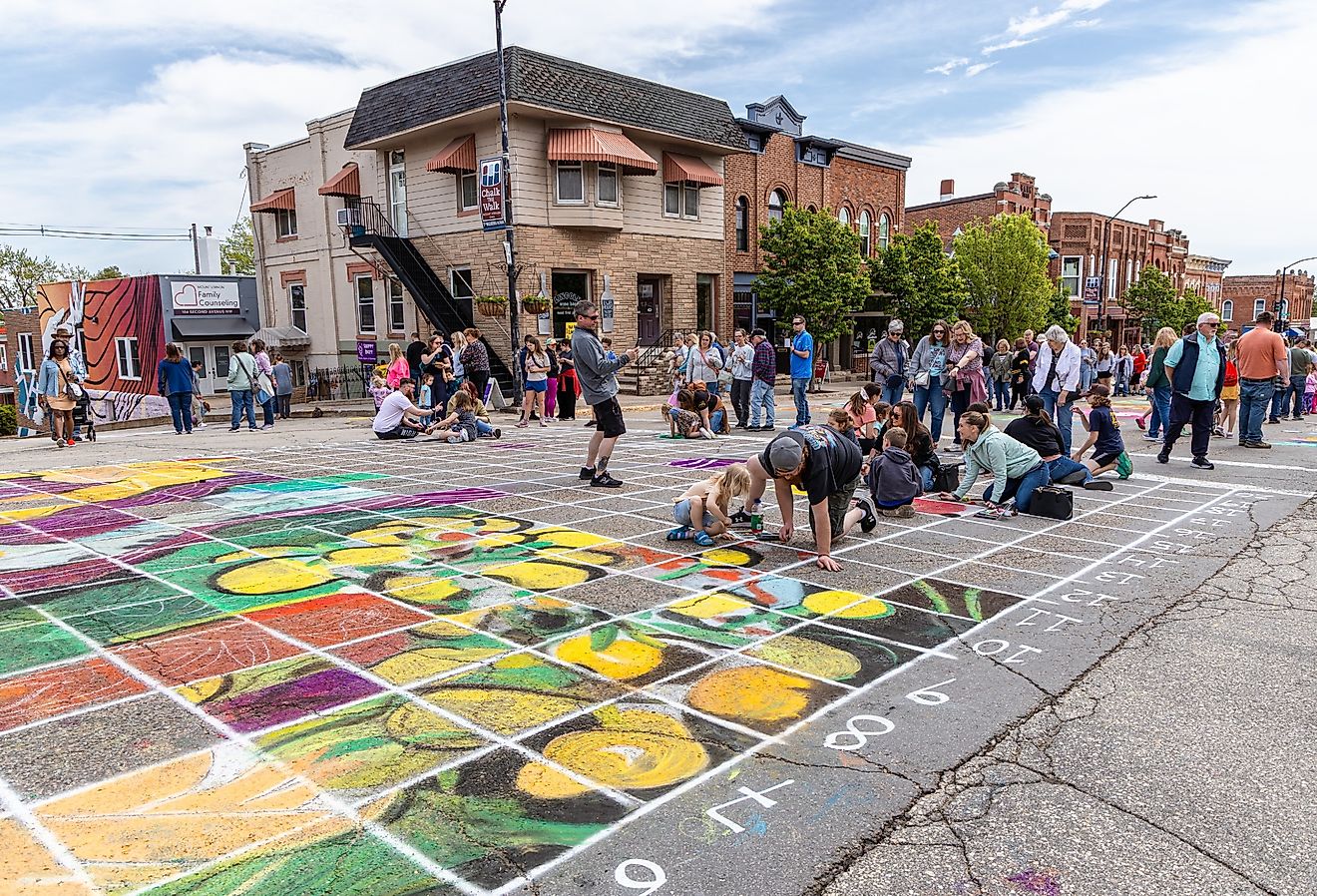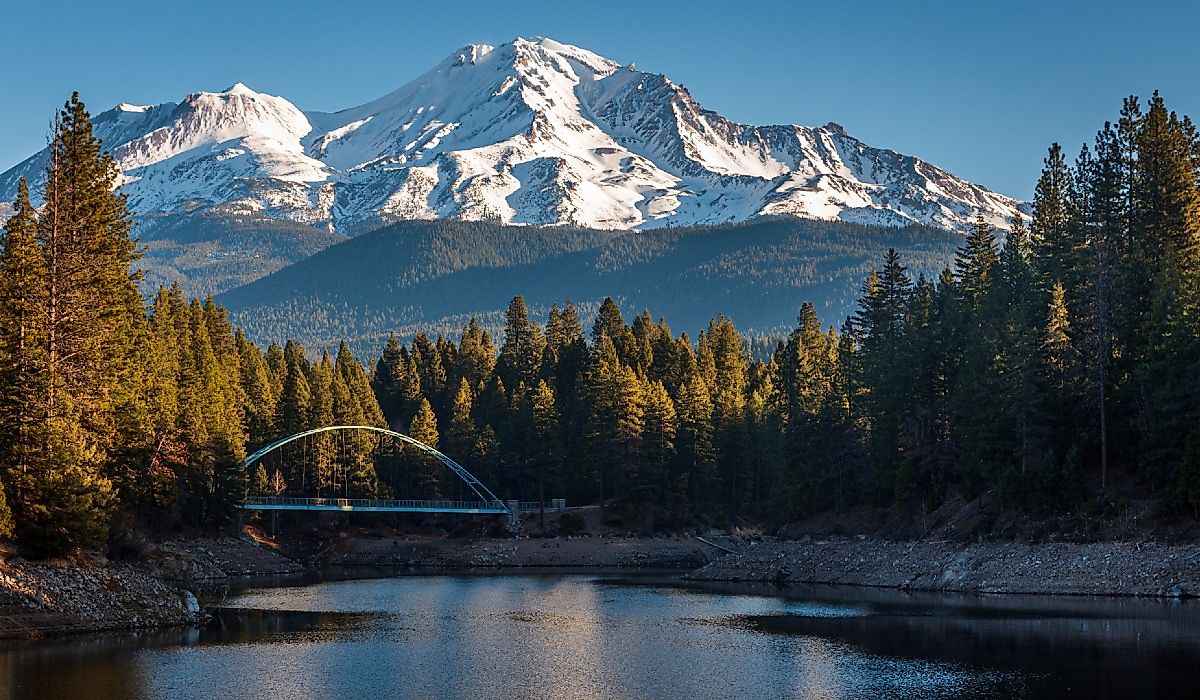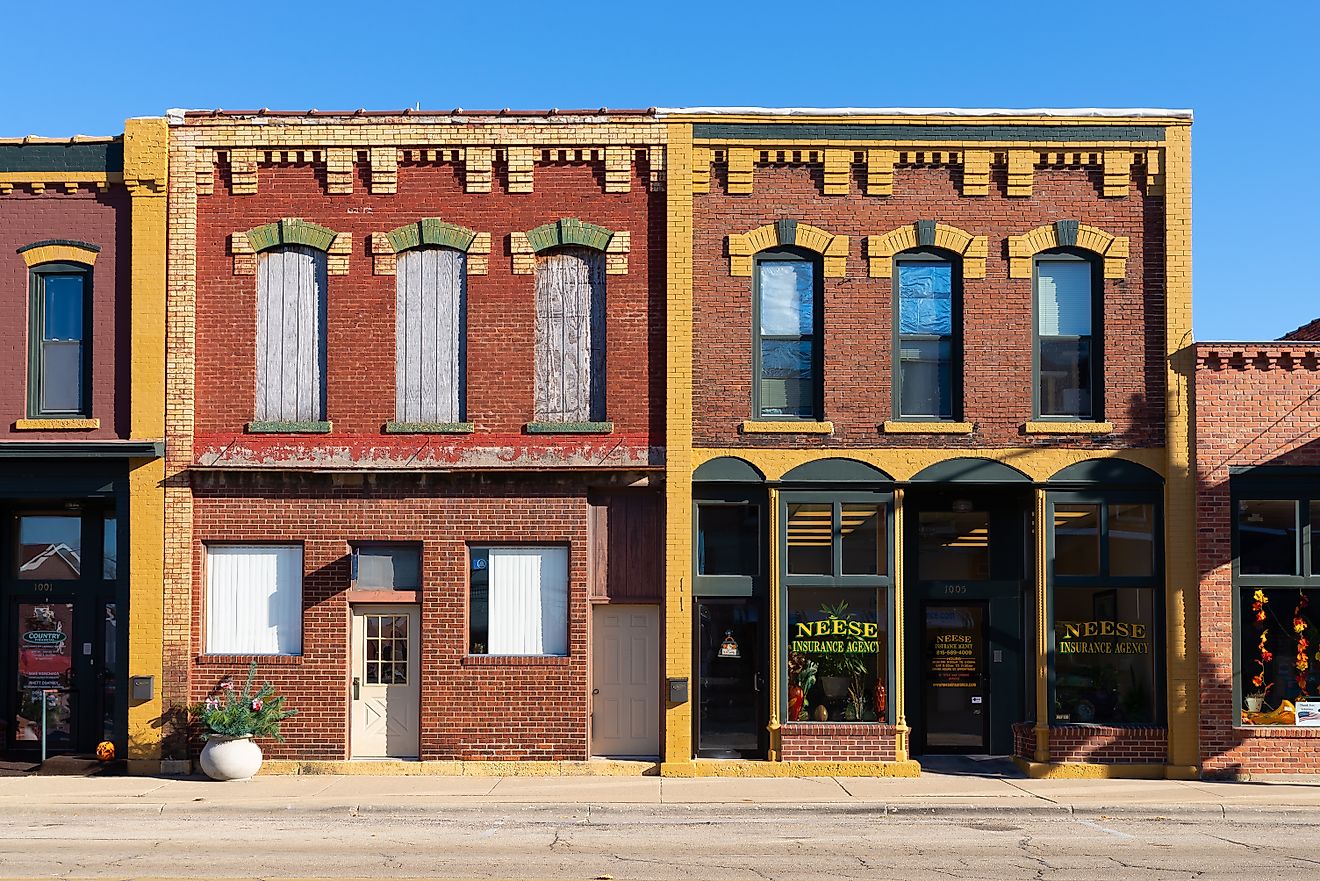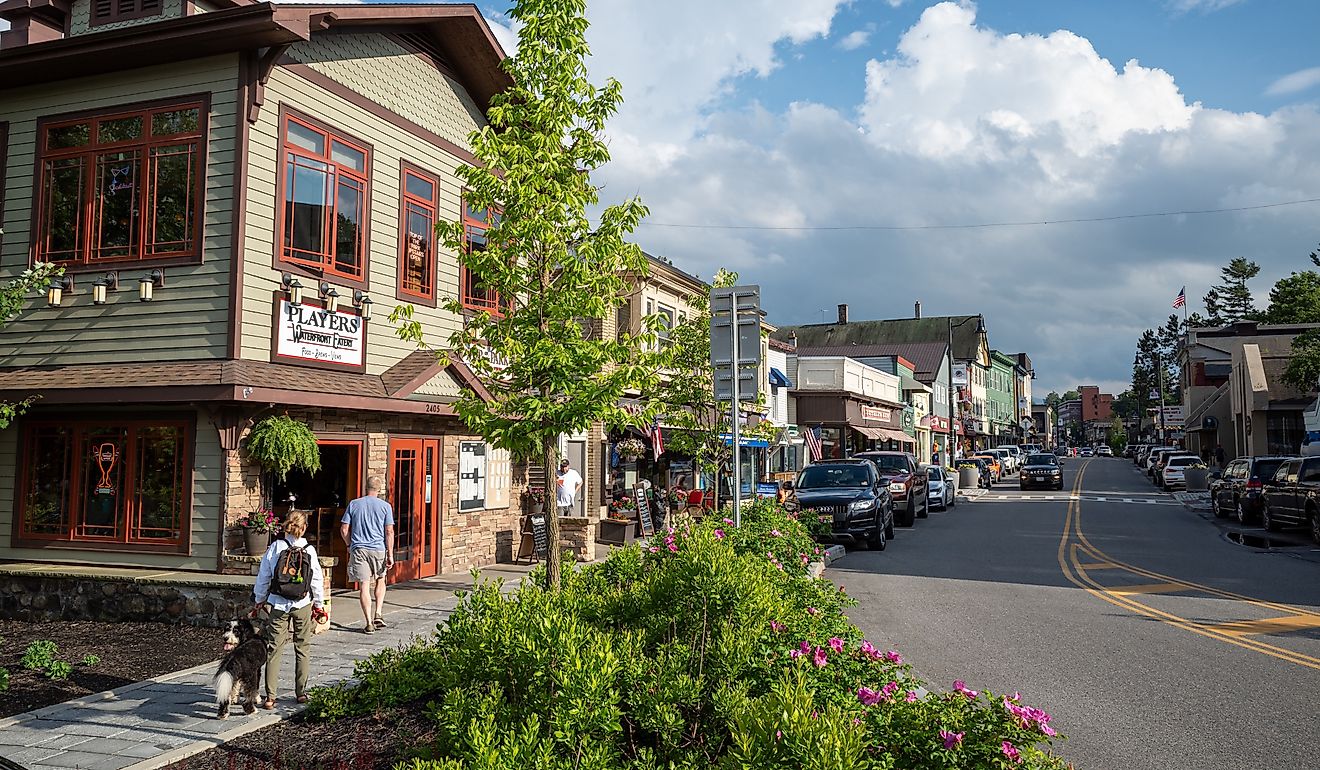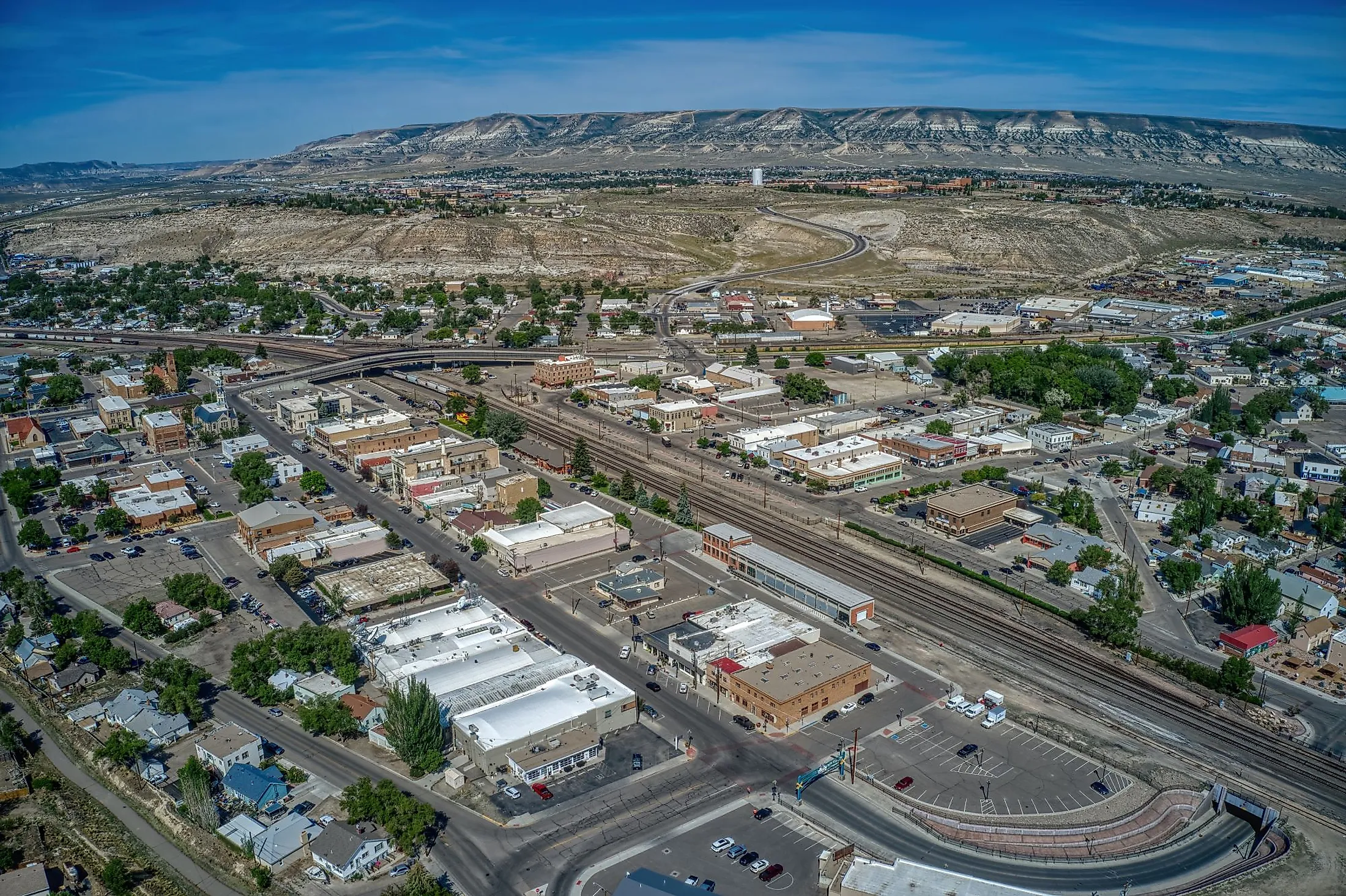
Rock Springs, Wyoming
Situated in Wyoming's Sweetwater County, Rock Springs is the state's fifth-most populous and the County's most populous city. Rock Springs was developed due to the expansion and growth of the local coal mining industry and was named after a rock spring that flowed through the northern portion of the town. The Union Pacific Railroad built hundreds of miles of track in 1868 using the coal mined nearby to power its steam engines. As immigrants flocked to Rock Springs to work in the Union Pacific coal mines, the expanding railroad and mining industry left behind a flourishing city with a rich cultural heritage. And this is how Rock Springs got its moniker, "Home of 56 Nationalities."
Geography And Climate Of Rock Springs
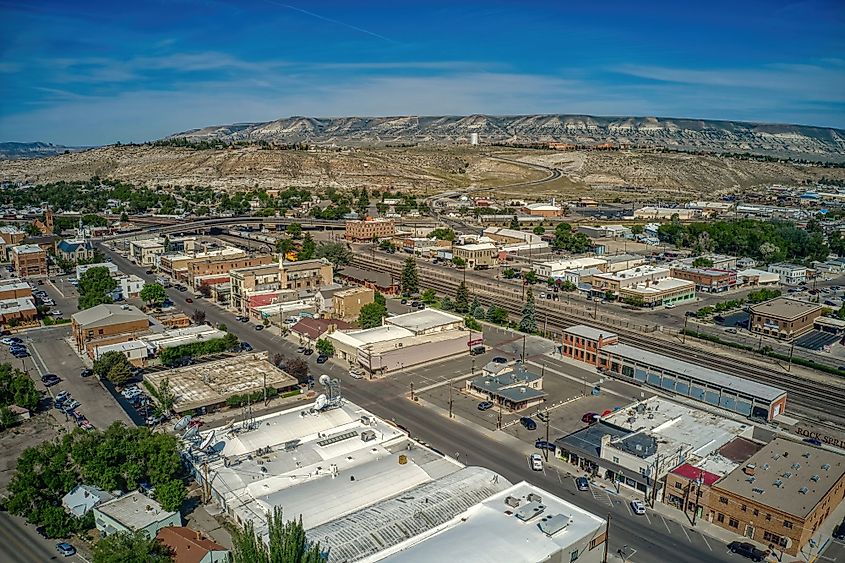
Rock Springs is situated approximately 21 km east of Green River City along Bitter Creek in the state's southwestern portion at an elevation of 2060 m. Rock Springs covers a total area of 51.16 sq. km, all of which is occupied by land. The city also serves as the entrance to the picturesque regions in the north, such as Jackson Lake, the Wind River Mountains, the Grand Tetons, and Yellowstone National Park.
According to the Köppen Climate Classification, Rock Springs experiences a semi-arid climate with warm summers and cold, snowy winters. The average annual temperature ranges between 15°F and 84°F; it is seldom below 0°F or over 91°F. July is the year's warmest month, with an average high temperature of 86.3°F and a low temperature of 52.5°F. December is the year's coldest month, having an average high temperature of 33.2°F and a low temperature of 12.4°F. Rock Springs receives an average yearly precipitation of 10.45 inches and a snowfall of 31.3 inches.
History Of Rock Springs
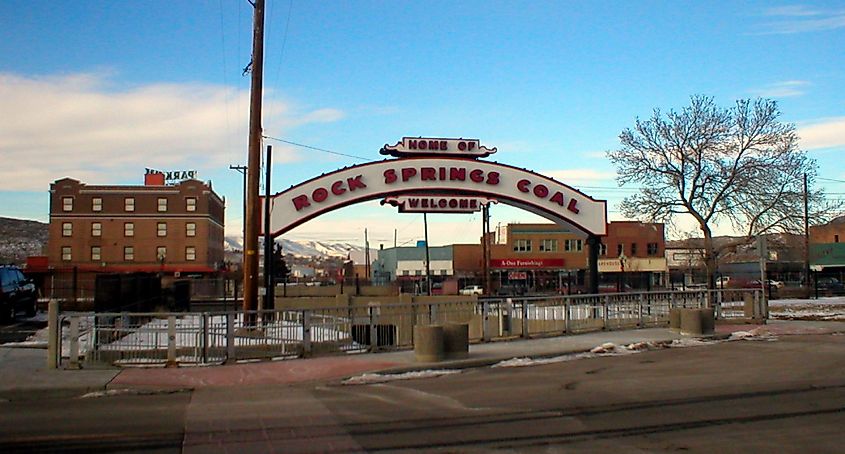
The earliest settlement at Rock Springs was established near Killpecker Creek in 1862 as an Overland Trail stop. With the development of coal mines and a modest hotel in 1868, the town began to flourish. With the introduction of the Union Pacific and other coal firms, the mines got larger. Many immigrants arrived in Rock Springs to work because the expanding mining business required a sizable labor force. Chinese miners were the largest ethnic group in the mines by 1870.
The Rock Springs Chinese Massacre, which resulted in the deaths of 28 Chinese people and the burning of Chinatown, was the result of racial hostility toward the Chinese in 1885. The restored Chinatown was guarded by U.S. Army troops, who constructed Camp Pilot Butte and stayed there until 1898. The city was able to thrive and develop as the region's social and economic hub because of coal mining. Rock Springs recently created a walking tour around its downtown historic area, complete with a booklet that features images of the locations, a map, and explanations.
The Population And Economy Of Rock Springs
As per the latest US Census, Rock Springs has a population of 23,526 residents, where 48.5% are females and 51.5% are males. The city's racial makeup is 78.6% white (non-Hispanic/Latino), 15.1% Hispanic or Latino, 2.2% African-American, and 0.6% Asian. The remaining are distributed among American Indians, Alaska Natives (AI/AN), and other mixed races. English is spoken by 89.2% of the population. The rest speak Spanish (8.7%), Indo-European languages (1.4%), Asian and Pacific Islander languages (0.7%), and other foreign languages (0.1%). Only 40.5% of the population in Rock Springs are naturalized US citizens. Veterans make up 9.1% of Rock Springs' population, of which 95.3% are males, and 4.7% are females.
The employment rate in Rock Springs is 68.7%, with a poverty rate of 10.2%. The homeownership rate is 73.3%, where the median gross rental cost is $876 per month, with a median household income of $74,625. Moreover, over the previous years, the job market in Rock Springs has decreased by -2%. Compared to the US average of 33.5%, future job growth in Rock Springs is expected to be 10% during the next ten years.
Attractions In And Around Rock Springs
Killpecker Sand Dunes
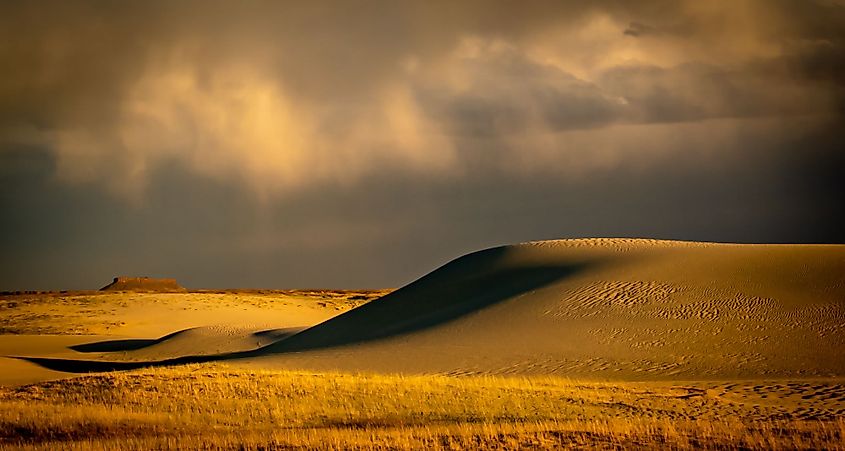
The Killpecker Sand Dunes, located north of Rock Springs, are the world's second-biggest sand dunes and the largest in North America. With its 11,000 acres of dunes, Killpecker Sand Dunes will interest and provide one with nonstop excitement for its various sports, such as dunes surfing and ATV riding. The youngsters might also enjoy themselves by bringing a frisbee or a beach volleyball. The descendants of the wild horses that the Spanish introduced to Rock Springs in the 16th century can also be seen here.
Rock Springs Historical Museum
In 1894, the Rock Springs Historical Museum was constructed. For nearly a century, the building housed the city hall, a jail and police station, a fire station, a courtroom, judge's chambers, and municipal offices. After remaining vacant for some time, the Centennial Museum opened during the 1988 Rock Springs Centennial Festival. The museum pays tribute to those who worked arduously and devotedly to build it, the town's coal mining heritage, and the Union Pacific Railroad. Visitors who seek a more profound knowledge of Rock Springs' history can use the research library inside the museum. The museum also has a timetable for group tours for students, friends, and families who desire a more participatory learning experience.
Bunning Park
Bunning Park's calm atmosphere makes it the ideal spot to unwind, reflect on significant moments in your life, or simply enjoy living as it is. Because it offers a secure atmosphere for toddlers, the park is also perfect for families with small children. There are several picnic places where parents may set up family tables and a playground outside for the kids to play. Dogs are permitted in the park as well. Bunning Park occasionally has musical performances by bands, which enhances the atmosphere. The mini-concerts, which begin early in the evening, draw more people, particularly teens.
